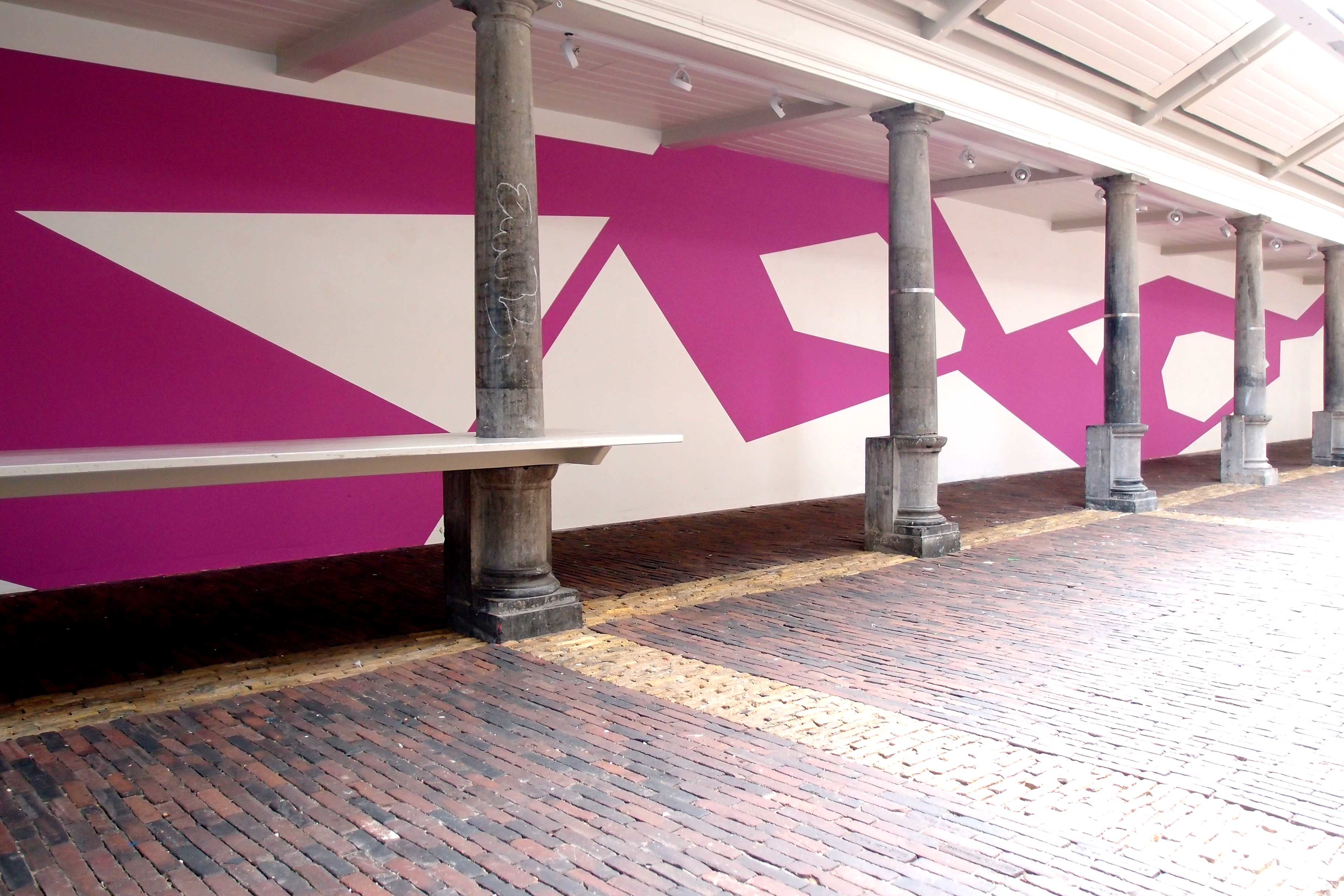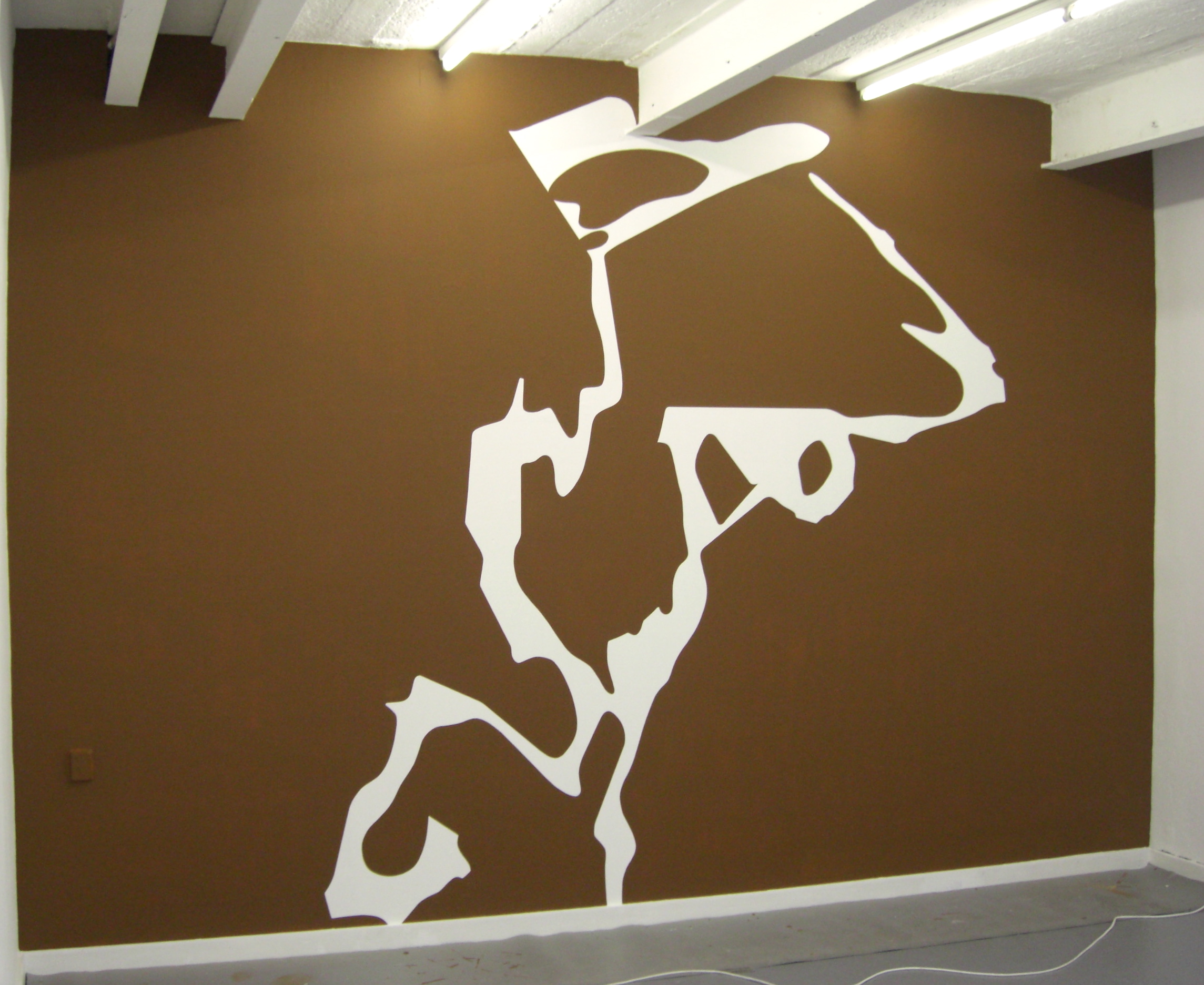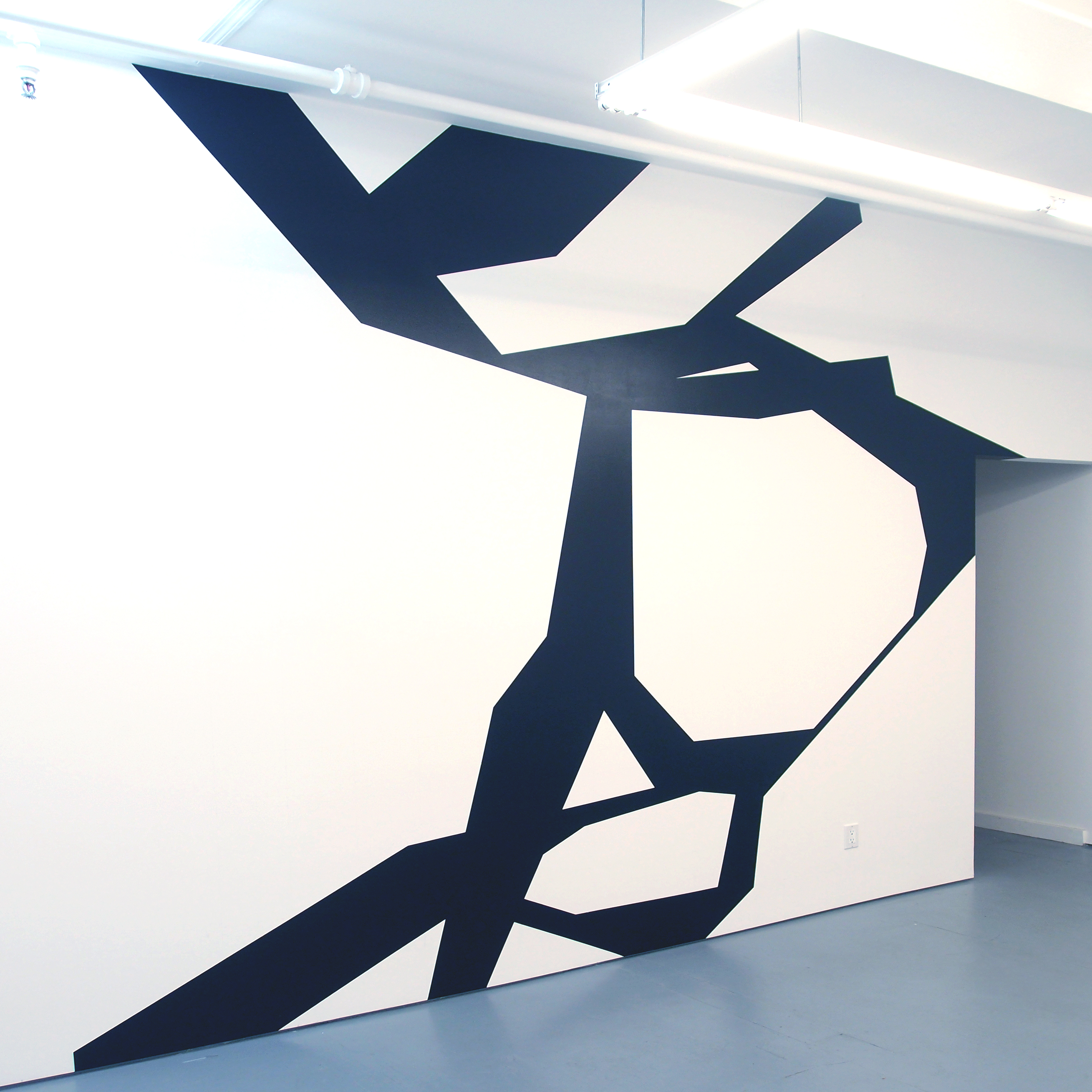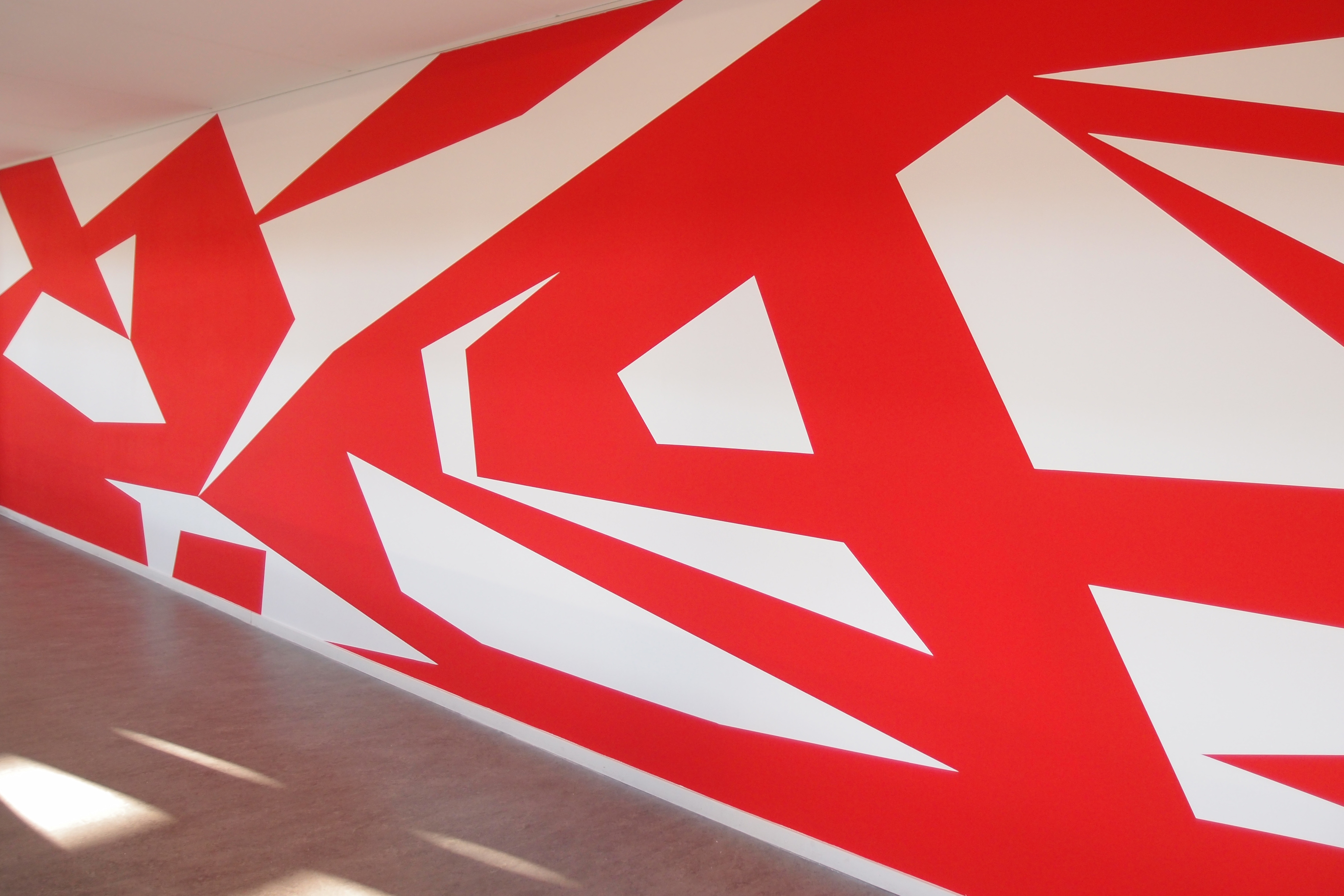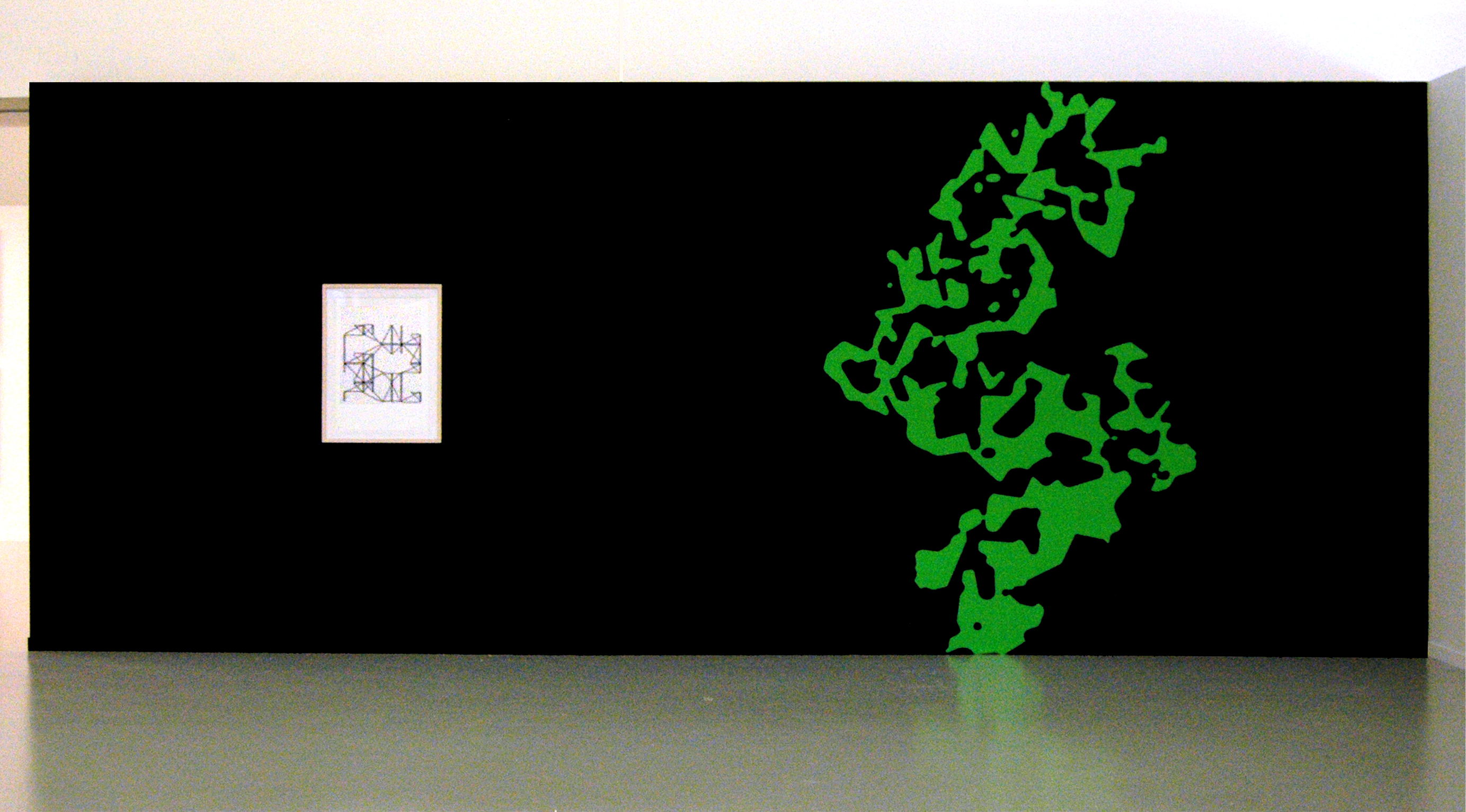Jasper van de Graaf || november 2016 ||
| Volledige naam | Jasper van de Graaf |
| Beroep | kunstenaar |
| Website | jaspervandergraaf.blogspot.nl |
Jasper van der Graaf, Mondriaanhuis Amersfoort NL 2016
Jasper van der Graaf (born in 1975 in Dordrecht, Netherlands, lives and works in Apeldoorn NL. Graduated from Willem de Kooning Academy Rotterdam, NL, fine arts. Jasper van der Graaf makes paintings and wall paintings. A well-considered and at the same time light-footed precision emenates from the works by the artist. Continuously evolving organic forms are produced on a flat surface, their evolution held in a frozen state of growth. A quietly poetic but always tense dialogue arises between paint and surface, form and plane, colour and drawing. Through a means of reductive abstraction the author seems to have withdrawn from the work. Van der Graaf’s paintings are strictly self-referential in that they employ only themselves as subject. In doing so, they implicitly refer tot systems, structures and processes in general.
Van der Graaf’s work is shown in artist’s initiatives, art spaces and musea in the Netherlands and abroad.
Jasper van der Graaf was invited by artist and curator Yifat Gat to make a wall painting in TRANSMITTER, Brooklyn NYC, for the extensive groupshow The Black & White Project 2016. To be able to do so, he is supported by the Dutch Mondriaan Fund.
Jasper van der Graaf, photomontage / sketch for Transmitter, The Black & White Project 2016
Frozen motion
An interview with Jasper van der Graaf by Esther Darley
Some abstract art is not as easy as you think. At least, that seems to apply to the paintings and murals of Jasper van der Graaf. He paints sharp planes and structures with rigidly defined contours on a monochrome surface. Sometimes they consist of simple floating parts, sometimes of complex concentrated forms. But as a whole, the designs have a natural self-evidence. They are strange and abstract, but look like vague acquaintances.
The work evokes associations with natural forms, such as ice crystals, liquids or irregular cracks. Structures in a frozen movement. Graphic and organic. Reassuringly familiar but also dangerously expansive. After all, they have the potential to grow and take over everything. This tension is enhanced by the size of the wall paintings. They enter into a direct relationship with the space and people moving in it.
This work seems inconceivably nonchalant, but also subtly planned. The viewer is subconsciously tempted to unravel the underlying secrets and discover the logic. But is there any?
Your work does not directly refer to the visible reality but at the same time it does not seem purely abstract. Is this important to you?
I especially don’t want to tell stories, or force too much. It’s nice if the viewer completes the work itself by looking and associate. To me this space for free interpretation is important. And this is different for everyone.
Do you see yourself in a kind of abstract tradition?
Abstraction is an elastic concept. Some colleagues seem to be directly descended from the geometric abstract art from the 20th century. Compared to that, I might be more in a ‘biomorphic’ branch. Not only because my work evokes associations with natural forms, but also because the construction isn’t immediately perceivable.
Can you tell something about the way you work?
I make paintings and murals. I design them in advance as small collages. Sometimes I’ll take old designs apart. Parts I re-use for new designs, as the grafting of a plant. I proceed until I reach the point where a design surprises or captivates me and could in my view be the basis for a painting or a mural. Then I execute it.
What is the importance of chance in your work?
I prefer to talk about spontaneity myself. During the process of designing I am looking for a self-evident logic. Coincidence certainly has a role. You could even say that the work, as it were, partly makes itself as a process of natural growth. The final image should be surprising, and therefore not entirely thought out to perfection. The work is successful for me when it has become more than I ever could conceive myself.
You often work with two contrasting colors. How do you choose them? Do you determine your color specific with the design?
I have to choose between many options. I therefore restrict myself in the number of colors. I also use limitations in the formal language. This gives the work clarity. I assess how space, design and color can be an effective combination with each other. It certainly is no science. But the choice of color ultimately is the key issue for a good result.

